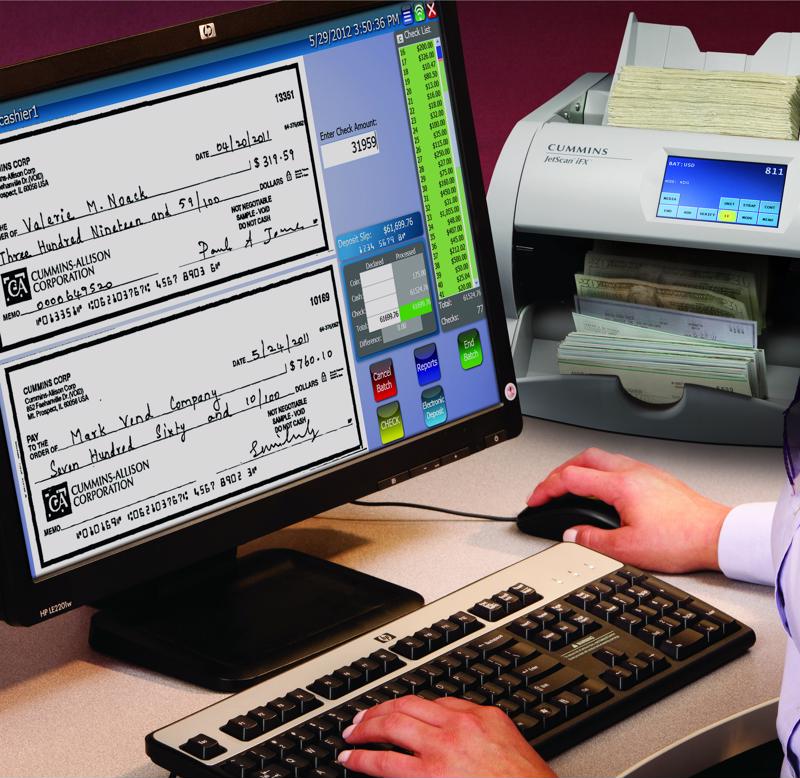Recent news indicates that customers will be looking for security and options from their payment procedures.
Online payments have been steadily growing.
The cash register’s day is over. The options provided by modern technology have made customer payments more convenient in some ways but more complicated in others. The financial landscape has had to shift considerably to keep up with advancing technology and trends. Recent data and statistics show what payment practices customers will be expecting from your business in 2015.
The check’s no longer in the mail, it’s online
Customers aren’t reaching for their checkbook as often as they used to.
Business Insider reported in 2009 that U.S. businesses and consumers used 28 billion paper checks, and that number has declined by about 1.8 billion each year. Business Insider referenced data collected by the Federal Reserve bank of Philadelphia that predicated paper checks would completely fall out of use by 2026.
Customers no longer find checks convenient. They like being able to make payments easily using online transactions or credit cards. Even those who do use checks prefer to scan them and send them digitally. Companies favor electronic options because it saves money and resources wasted by physical mailing practices.
The death of the paper check is good news for your business because it will reduce payment fraud. The 2015 Association for Financial Professionals’ 2015 Payment Control Survey found 77 percent of payment fraud was committed using paper checks.
 Businesses prefer scanned checks over paper copies.
Businesses prefer scanned checks over paper copies.Consumers want security
This year will see the rise of payment security standards due to public demand. Recent news stories have customers fearful for their financial information. Well-publicized data breaches at Target, JP Morgan Chase and Home Depot have caused consumers to search for companies based on their advertised payment security.
SC Magazine, an information resource for security professionals, posted the results of the data security study conducted by Ponemon Institute. The study discovered that after a data breach, 75 percent of those surveyed stated the company who lost the information was responsible. The SC Magazine article suggested small businesses should provide their employees with security training, and everyone in the company should be able to talk confidently with their customers about its payment processes to attract new clients.
The U.S. government has been taking steps to secure payments based on new technology. BAI financial services stated that by the end of 2015, the federal government is planning to standardize next-generation payments. This means a promotion of real-time payment technologies and new security regulations for electronic finances.
A slow down in EMV adoption
One new technology being promoted by the federal government is chip-and-PIN cards.
New Europay, MasterCard, and Visa plastic payment cards have a microchip that can be scanned by point-of-sales devices. Once scanned, a customer can validate the card with a pin number or signature. EMV cards are already widely used in Europe, and the U.S. wants to make them standard. If a merchant is unable to accept EMV payments by October 2015, the government states they will be held liable for any future fraudulent payments.
“Consumers prefer to make their payments online in growing numbers.”
The Wall Street Journal argued U.S. merchants won’t be as quick to adopt EMV technology as the government hopes. Most businesses are focused on adopting mobile and contactless payments that actually offer better security and seem to be more popular with consumers. Companies are more concerned with protecting their client’s credit card numbers online than being able to authenticate their in-store use.
Businesses need to be adaptable
According to a most recent report released by comScore, e-commerce rose by 14 percent in 2013. Consumers prefer to make their payments online in growing numbers.
Despite recent news, online payments prove to be more secure than using paper checks or in-store credit card purchases, provided that businesses are utilizing the proper payment tools. The SC magazine article indicated clients are comfortable with new technology when it isn’t being forced on them. Your business should be able to offer them the payment method of their choice.
To keep up with evolving payment trends, a security dealer should work with a payment partner. Security billing software can meet the demands of the ever-changing financial landscape.
- A modern software platform accepts payments from your customers’ preferred methods, including card, check or online transactions.
- Most software is easy to learn, and your employees will be aware of its benefits. They can then share this information with your customers.
- A payment processor can act as a billing agent and will make sure the collection of customer payment information is in compliance with the Payment Card Industry Data Security Standards. It will also keep you informed about the most recent government regulations.
- Once you’ve established a payment system, you can create automated billing, and your clients can use auto-pay to make payments as easy as possible.
To make sure you’re consistently accepting payments for the work your company is providing, you should make use of the latest technology to give your clients and yourself financial peace of mind.
